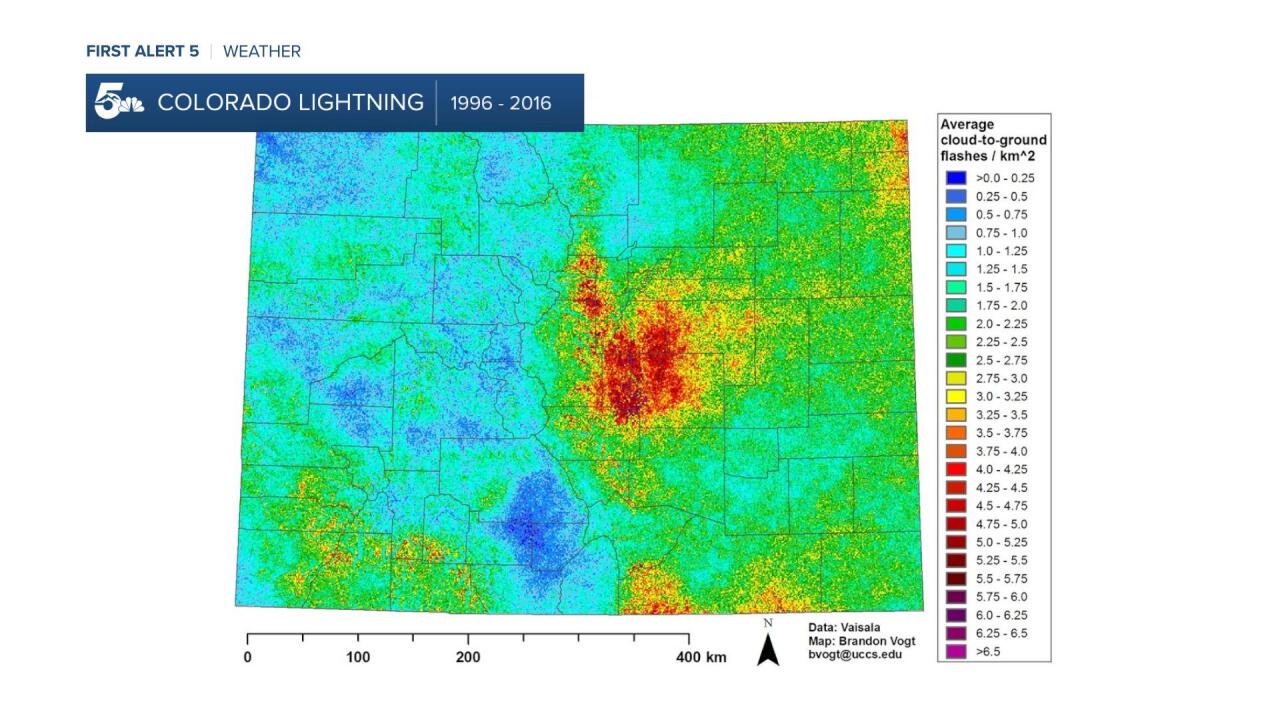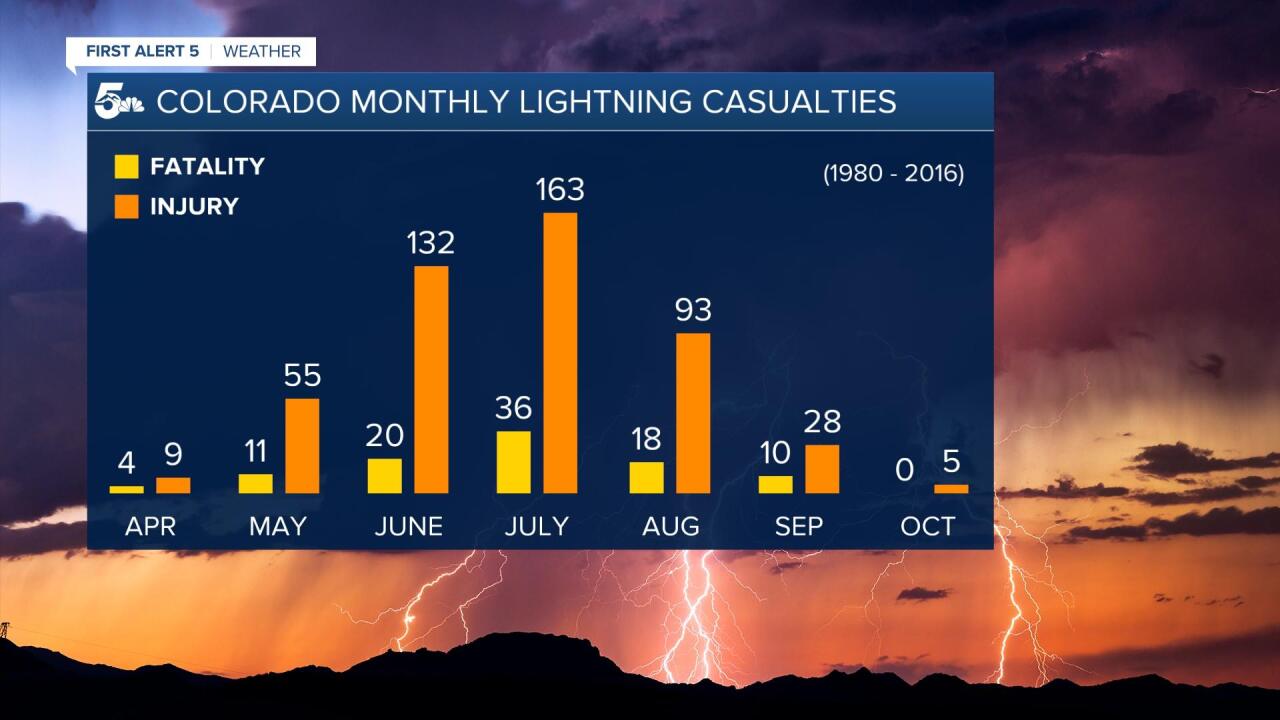Rain and thunderstorms will start replacing snow in the forecast as we move farther into the month of May!
With storms comes lightning, and for those of you who haven't been here very long, lightning is a big deal in Colorado.

This map of cloud to ground lightning over the last 20 years shows just how common lightning strikes are across the Front Range. To read about the research behind this map, click here.
Teller and El Paso Counties are actually home to the most lightning strikes in all of Colorado!
Unfortunately, El Paso ranks number 1 in Colorado for lightning striking people, with 10 fatalities and 84 injuries since 1980. Larimer county ranks 2nd with 10 fatalities and 76 injuries. Jefferson county ranks 3rd at 9 fatalities and 38 injuries.
There's a reason there's a lightning shelter at Barr camp when you climb to the summit of Pikes Peak. If you aren't prepared for the weather, it can be extremely dangerous up above the tree line.

As the weather warms, storms become more and more common.
We tend to see thunderstorms pick up in mid-May and continue through the beginning of August.
Lightning casualties (injuries and fatalities), are much more common in Colorado in June and July compared to any other month.
Some of this has to do with the frequency of daytime storms in monsoon season, but a lot of it is people getting out and hiking in our beautiful summer weather.

When you look at lightning casualties by the hour, we tend to see the peak in the early to mid-afternoon.
This actually makes a lot of sense, especially here in Colorado.
Storm development in the warmer months tends to start up around 11 am to 1 pm in the daytime. Storms usually grow stronger between 2 to 4 pm and weaken through the evening.
As storms grow stronger and mature, they produce more lightning over a wider area. The bigger the storm, the more likely someone could get hit by a lightning bolt.

Interestingly, there's actually a gender connection to lightning casualties over the years!
To no one's huge surprise, at least according to the data, men are around 3 to 4 times more likely to be injured or killed by lightning.
Here are some fun Myths and Facts about Lightning:
Myth: Crouching in a thunderstorm will protect you from lightning.
Fact: Crouching doesn't make a difference. Lightning can still strike anyone in a crouched position. To be safe, get to a building or hard-topped vehicle.
Myth: Lightning never strikes the same place twice.
Fact: Lightning does strike the same place repeatedly, especially tall, isolated objects. The Empire State Building, for instance, is stuck over 20 times a year by lightning.
Myth: Rubber tires on a car protect you from lightning.
Fact: The metal body of a car protects you from lightning, not the rubber tires. Electricity is conducted through the body, around the car, and into the ground if struck by lightning.
Myth: During a thunderstorm, you should seek shelter under a tree to stay dry.
Fact: Seeking shelter under a tree is exceptionally dangerous in a storm, especially if there's lightning. Being underneath a tree is the second leading cause of lightning casualties.
Myth: Metal structures, objects, or jewelry will attract lightning.
Fact: Height, pointy shape, and isolation dictate where lightning strikes. Metal makes no difference. Wearing jewelry will not make you more susceptible to being struck by lightning.
Myth: Lightning won't strike outside a storm and without rain.
Fact: Lightning can and often strikes 3 or more miles from the center of a thunderstorm. Bolts can strike as far as 10-15 miles from a storm.
How to avoid being struck by lightning
The first step is awareness. Check the forecast before you head out for activities or work. If thunderstorms are expected, have a plan B and a shelter nearby.
A building (with walls and a roof) and your car are the only truly safe places from lightning.
"When thunder roars, go indoors."
When you see or hear lightning get out of bodies of water and do not touch metal objects. Both water and metal are conductive.
Lightning will often find the shortest distance between the cloud and the ground to discharge. Avoid standing in open fields or on top of hills and do not stand next to tall objects.
While hiking, if lightning is imminent and no shelter is nearby, drop all metal objects. Spread out from your companions, at least 20-30 feet, to avoid group strikes. Get below tree-line first, but avoid the tallest trees in the area if possible.
It is best to hike in the morning and plan to be off the mountain by 11 am.




